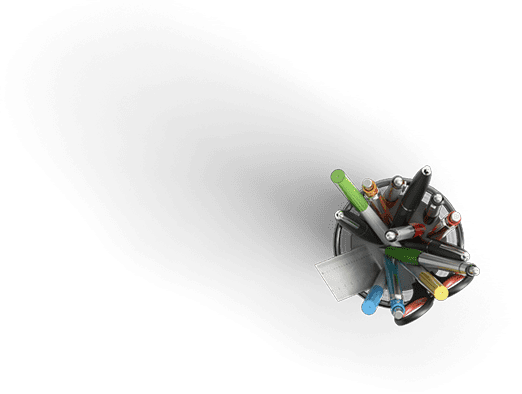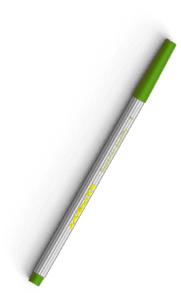UMGC Gnentics Software Questions
Description
Question 8 (5 points)
Which of the following statements are true about RNA editing?
Question 8 options:
RNA editing occurs in all organisms
RNA editing can impact the activity, stability and localization of RNA molecules.
RNA editing is associated with diseases in humans.
RNA editing is a molecular process that makes specific changes to the sequence of RNA after transcription.
RNA editing does not include insertion or deletion within the RNA molecule.
Question 9 (5 points)
Which of the following statements are true about the commands used in mothur during the process of generating contigs, filtering and merging the contigs and counting contigs?
Question 9 options:
The count.seqs command will merge the contigs that are identical and count the number of sequences for each unique type
The make.contigs command requires contigs.files as input
The unique.seqs command will generate a table where the rows are the names of the unique sequence and the columns are the names of the groups and the data in the table is the number of times each unique sequence is identified for each group.
The pcr.seqs command will filter the contigs established from the make.contigs command to only use the ones that look correct, e.g. under 275bps with zero ambiguous bases
The make.contigs command will extract the sequence and quality score data from your fastq files, create the reverse complement of the reverse read and then join the reads into contigs
Question 10 (5 points)
Which of the following commands and their functions are correct when using MariaDB?
Question 10 options:
CREATE TABLE Persons (ID int NOT NULL, LastName varchar(255) NOT NULL, FirstName varchar(255), Age int, PRIMARY KEY (ID));
tells SQL the LastName can be 255 characters.
insert into Gene VALUES(1, “1433E”, “enzyme binding”);
tells MariaDB to add values to the table Gene, then within the parentheses we specify values for each of the defined fields, e.g. gid, name, annotation.
TABLE Persons (ID int NOT NULL, LastName varchar(255) NOT NULL, FirstName varchar(255), Age int, PRIMARY KEY (ID));
tells SQL the primary key is the ID which is used for indexing.
cd BIFS619;
tells SQL which database we want to use
CREATE TABLE Persons (ID int NOT NULL, LastName varchar(255) NOT NULL, FirstName varchar(255), Age int, PRIMARY KEY (ID));
tells SQL to create a table named Persons
Question 11 (5 points)
Which of the following statements are true about proteomics?
Question 11 options:
Proteomics involves the sum total of expressed proteins in an organism.
Proteomics can detect splice variants.
Proteomics can detect RNA editing modifications.
Proteomics takes into account post-translational modifications that may occur after transcription.
The current estimate of protein coding genes in the genome is over 20,000
Question 12 (5 points)
Which of the following statements are true about MySQL?
Question 12 options:
MySQL is a relational database and it is fast, reliable, easy, and most importantly, open source, meaning that it is free to all users.
MariaDB is not associated with MySQL but can be used to set up a SQL database.
The APIs associated with MySQL can use only C++.
MySQL provides a large number of application programming interfaces (APIs), that allow you to access, search, retrieve, and edit the database.
If you wanted to create your own browsable B. thuringiensis genome web page, you would need to start by getting all of your data into a web browser.
Question 13 (5 points)
Which of the following statements are true about the diversity of samples.
Question 13 options:
Alpha diversity is the observed richness diversity between samples
Rarefaction compensates for differences between library sizes when processing samples for alpha diversity visualization.
Alpha diversity can be visualized by using PCoA (Principle Coordinates Analysis)
Beta diversity is the observed richness/diversity within a sample
Before we can run a PCoA to visualize beta diversity we need to rarefy the data using the dist.shared command in mothur.
Question 14 (5 points)
Which of the following statements are true about the commands used in mothur when further reducing noise after initial filtering and counting?
Question 14 options:
The cluster command will split the sequences by group and then sort them by abundance and go from most abundant to least and identify sequences that are within 2 nt of each other. If the sequences are within 2nt of each other then will be merged.
The command chimera will use a de novo approach to identify chimeras by creating a database as it processes sequences.
Using the remove.chimeras command after identifying chimeras will remove the chimeras from our output file.
The commands make.shared and classify.otu will compute a table containing a list of the OTUs, their prevalence, and their identity.
To cluster the sequences into OTUs we first create a distance matrix for the sequences (using dist.seqs), then we cluster them based on distance using the cluster command.
Question 15 (5 points)
Based on the summary.seqs output below, which statements are true about the output?

Question 15 options:
The maximum length contig is 502bp
There are no ambiguous bases for the majority of sequences.
Approximately 25% of the sequences fall outside of the average length of 252bp length.
The average size or length of each contig is 253bp
The total number of sequences is 152360.
Question 16 (5 points)
Which of the following statements are true about SQL databases.
Question 16 options:
SQL databases can efficiently store, manage, and retrieve large amounts of data.
SQL is by nature non-relational, meaning that the data is organized in many separate logical tables that are connected by a common identifying column (e.g. a gene ID) called a key.
Within SQL tables, each row (called a field, or attribute) will have a unique name and will contain different data.
Each row of an SQL table represents two to three records.
Question 17 (5 points)
Which of the following statements are true about the process of tandem mass spectrometry?
Question 17 options:
Peptides are ionized by liquid secondary-ion mass spectrometry.
The peptides are exposed to a beam of ions in the mass spectrometer.
Ionized peptides are dissolved in a viscous matrix.
Protein fragments are fractionated using low-performance liquid chromatography (LPLC)
The protein is digested with site-specific reagents such as trypsin.
Question 18 (5 points)
The permissions of a file are represented by 10 characters to the left of each line after typing ls -al Which of the following statements are true about this permission:
-rw-rw-r–
Question 18 options:
The user is represented by the 5th, 6th, and 7th characters.
This line item represents permissions for a directoy.
Others are represented by the 8th, 9th, and 10th characters.
r = Read
The group is represented by the 2nd, 3rd and 4th characters
Question 19 (5 points)
Which of the following fields could be impacted by metagenomics?
Question 19 options:
Bioenergy: the development of microbial systems and processes for new bioenergy resources that will be more economical and environmentally sustainable and less vulnerable to disruption by world politics.
Bioremediation: the development of tools for monitoring environmental damage at all levels (from climate change to leaking gas-storage tanks) and microbe-based (green) methods for restoring healthy ecosystems.
Agriculture: the development of more effective and comprehensive methods for early detection of threats to food production (crop and animal diseases) and food safety (monitoring and early detection of dangerous microbial contaminants) and the development of management practices that maximize the beneficial attributes of microbial communities in and around domestic plants and animals.
Biotechnology: the identification and exploitation of the remarkably versatile and diverse biosynthetic capacities of microbial communities to generate beneficial industrial, food, and health products.
Biodefense and Microbial Forensics: the development of more effective vaccines and therapeutics against potential bioterror agents, the deployment of genomic biosensors to monitor microbial ecosystems for known and potential pathogens, and the ability to precisely identify and characterize microbes that have played a role in war, terrorism, and crime events, thus contributing to discovering the source of the microbes and the party responsible for their use.
Question 20 (5 points)
Looking at the example below, which statements are true about this script?
#!/bin/bash
# This is an installer script for QUAST
# install quast:
cd ~ # we will install quast in the home directory
sudo apt install git
git clone https://github.com/ablab/quast.git
# Move into the quast directory
cd quast
# download required libraries and setup quast
sudo apt-get update && sudo apt-get install -y
pkg-config libfreetype6-dev libpng-dev python3-matplotlib
sudo apt install python3
sudo ln -s /usr/bin/python3 /usr/bin/python
sudo apt install python-setuptools
# And finally install quast
./install.sh
Question 20 options:
This script will install quast
#!/bin/bash is not required to execute the script
This script will update quast
This script will change directories so you are in the quast directory after quast installation
This script will install quast

Have a similar assignment? "Place an order for your assignment and have exceptional work written by our team of experts, guaranteeing you A results."








